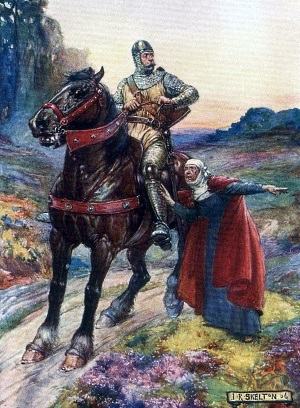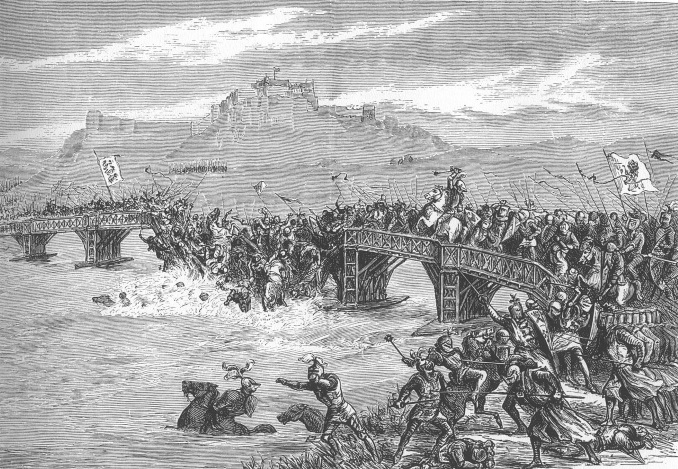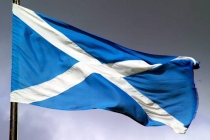William Wallace - The Great Scottish Patriot

William Wallace (Scottish Gaelic: Uilleam Uallas; c.1270 - died 23 August 1305) was a Scottish knight, patriot and national hero. He was one of the main leaders during the Wars of Scottish Independence. Leading the Scottish rebellion against Edward I and along with Andrew Murray inflicted a famous defeat on the English army at Stirling Bridge.
William Wallace was born in the 1270s in Elderslie in Renfrewshire into a family of gentry, although there are also claims that he was born in Ellerslie in Ayrshire. Little is known about his family history of which there are no reliable sources. His early life was recounted in the The Actes and Deidis of the Illustre and Vallyeant Campioun Schir William Wallace, more commonly known as The Wallace written around 1477 by wandering minstrel Blind Harry (c. 1440 – 1492).
Following the death in 1286 of Alexander III, King of Scotland his only surviving relative, his three-year-old granddaughter, Margaret, the Maid of Norway was Scotland's Queen-in-waiting. Margaret died en route to Scotland from Norway in 1290. John Balliol was named as the new King of Scotland in 1292. However, Edward I of England undermined his reign and viewed Scotland as a vassal state. John Balliol's weak response to this angered the Scottish who grew tired of him and in 1295 appointed a council of twelve to rule instead. The newly-formed council negotiated a defensive alliance with King Edward of England's enemy, France. Scotland's treaty with France was known as the Auld Alliance.
In retaliation Edward invaded Scotland in 1296 and a war began that is known as the Wars of Scottish Independence between England and Scotland. The English army massacred civilians at Berwick and the Scots retaliated by doing the same throughout Northumberland. The English army marched north and captured Dunbar, Roxburgh, Jedburgh, Edinburgh, Stirling and Montrose. Edward takes the Stone of Destiny from Scone, then moved back south to Berwick to take the oaths of loyalty from over 2000 Scottish nobles (the Ragman Roll).
Scottish unrest is widespread. In May 1297, William Wallace attacked the town of Lanark, killing the English sheriff and rebellion grows. He defeated the English Garrison in Glasgow at the Battle of the Bell o' the Brae. Andrew Murray (also known as Moray) led a revolt in the north and captured a series of English castles in the Highlands and the north east, and besieged Urquhart Castle. Men gathered to join William Wallace and he began to drive the English out of Fife and Perthshire. In September 1297, the forces of William Wallace and Andrew Murray defeated a much larger English force at the Battle of Stirling Bridge.

This Scottish victory over the English and subsequent military successes severely weakened the English grip on Scotland. William Wallace then launched raids into England but was beaten back. In 1298 he was knighted and appointed the Guardian of the Kingdom of Scotland in the name of John Balliol, the deposed king of Scotland. Edward then marched north with a powerful army marching deeper into Scotland. In July 1298, the Scottish and English armies met near Falkirk, and the Scots were defeated. Wallace escaped and he resigned the guardianship and was succeeded by Robert Bruce and John Comyn.
Wallace went abroad in 1299, notably to France, to try and seek support for the Scottish cause. He returned to Scotland in 1303. In his absence the English had strengthened their hold over Scotland. William Wallace sort to rally the fight back and he was a wanted man with the English king offering a large sum of money to anyone who killed or captured him. William Wallace was betrayed and seized at Robroyston near Glasgow on 3rd August 1305. He was transported to London where in he was charged and tried with treason. During the sham trial at which he was denied the right to speak, he shouted his denial of the charge stating that he was:
A Scot, born in Scotland, and did not recognise England as his sovereign nation.
His murder took place on 23 August, 1305 when he was stripped naked and dragged through the city. He was hung, drawn and quartered. First strangled by hanging, taken down while alive, emasculated, eviscerated and his bowels burned in front of him. He was beheaded then cut into four parts. His head was placed on London Bridge, and his limbs displayed in Newcastle, Berwick, Stirling and Perth. The hope of the English King was to disrespect and cower the Scottish. However, at the end of the Wars of Scottish Independence between the Kingdom of Scotland and the Kingdom of England, Scotland retained its status as an independent nation.
The legacy of William Wallace is summed up perfectly by The Society of William Wallace:
But Sir William Wallace needs no tomb. His memory lives on in the heart and souls of Scots, every generation recognising his devotion to his native soil, and he will be remembered by Scots men and women till the end of time.
- Scottish
- English
- Log in to post comments





